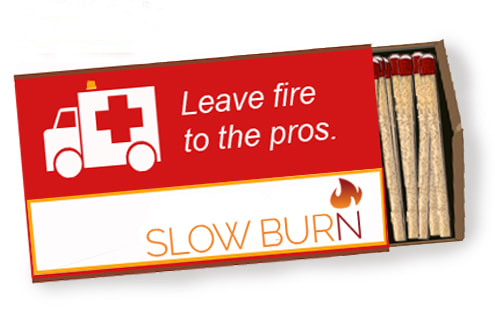 A COOL BREEZE DRIFTS THROUGH THE OPEN WINDOW Outside, it's a cacophony of tropical birds, chattering and nattering and pooeeting and squawking. Occasionally cutting through the din of indigenous birdsong is the crowing of a rooster proclaiming its place. When sleep leaves too early (as does too often), this is a favorite spot: by the window with a cup of coffee, listening to the delightful disharmony. It is a musical chaos here at the edge of civilization. The location is by a crescent-shaped bay on the Pacific. Mark Twain spent time here, and wrote about it--though those writings relatively unknown. THIS LOCATION FIGURED PROMINENTLY IN THE CALIFORNIA GOLD RUSH Prospectors flocking to California could sail around Cape Horn, which was time consuming, uncomfortable and dangerous. Or they could sail to the Caribbean, and take an overland route that was faster and safer and brought them to the docks here. Cornelius Vanderbilt cashed in on that traffic, demonstrating once again that the most successful gold-rush entrepreneurs were those who provided goods and services to the rush. The most recent gold rush here has been surfers. The remote beaches with good surf breaks have become famous in the sport. AND YES, PART OF THE ATTRACTION IS THAT THINGS HERE ARE CHEAP The other night, the Fabulous Honey Parker and I dined at a tapas joint we like. The owner is from Barcelona and a lovely man. His food (as the notorious one-man brand, Guy Fieri would say) is off the hook. The star of the tapas menu is a tiny filet mignon in a gorgonzola cheese sauce. The two of us dined well on six small plates and two drinks each during a leisurely 90 minutes. The tab was $23, which is an expensive night out here. (Unless, of course, you choose to hit one of the handful of big, touristy places on the beach. Then, the prices climb sharply.) As I write this, a gecko is initiating a serpentine run along the wall above the bathroom door. Just outside the window, there's a loud thump as a fresh mango drops to the ground. After breakfast, we're going surfing. SO, DOES THIS SOUND PRETTY GOOD FOR A WAR-TORN HELL HOLE? Seriously. That's the brand here. Americans think this place is dangerous and deadly. They think heavily-armed rebels in jungle encampments. As a friend of mine who loves it here once said, "People in the U.S. still have a Reagan-era mentality about the place." Welcome to the branding challenge that is Nicaragua--a country recognized as one of the safest places in all of the Americas. If you talk to my father-in-law, he thinks we've come down here to "hang with Noriega." (That was Panama and his present hang is a U.S. Federal prison, so no.) My mother-in-law no doubt suspects a dearth of white porcelain bathroom fixtures and imagines a dark hole in the ground. THIS COUNTRY IS A GREAT EXAMPLE OF HOW A BRAND CAN BE STUCK IN TIME Despite Nicaraguan tourism's concerted efforts to evolve the brand, the old persona still sticks to perceptions in much of the U.S. And props to people for addressing it head-on. If you go to the ViaNica website, a portal for Nicaragua tourism, it says it right there on the "about" page: Nicaragua is known as a country of political instability, wars, and revolution. The dictatorship of the Somoza family in the first half of the 20th century, the revolution of the Sandinstas and the war against the Contras, which were funded by the US, helped establishing this image. Fortunately, these days are over. Thanks, ViaNica, for reminding everyone that the U.S. was responsible for so much of that turmoil. (That's a whole other branding challenge and a different screed entirely.) LESSON: BRAND YOURSELF OR THEY'LL DO IT FOR YOU Nicaraguan tourism is making an effort. But as we've seen before, if you don't brand your business, the customer will give you a brand you may not like. And a majority of Americans in an unscientific study (focusing on my in-laws and most everyone else we know) believe the Nicaragua brand to be one of peril, murder and risk. Which is not so great for the little nation of Nicaragua. It's pretty good for those of us who enjoy a tropical bargain, mind you. But this impoverished little country that could stands as a stark lesson in the law of unintended branding. If it's any consolation, though, there's a brand of U.S. citizen coming here and doing fine things. Volunteerism here is huge. Americans and Canadians are teaching and building and healing and giving to a community that desperately needs it. So after everyone's done cracking wise about jungle camo and AK-47s, go ahead and put that in your snarky Sandinista-joke pipe and smoke it. I'm picking up a mango in the front yard and going surfing.
0 Comments
Leave a Reply. |
AuthorBlaine Parker is prone to ranting about any and all things related to brand. In many ways, he is a professional curmudgeon. While there is no known vaccine for this, the condition is also not contagious. Unless you choose it to be so. Archives
February 2022
Categories
All
|
|
© Copyright 2020 Slow Burn Marketing LLC |

 RSS Feed
RSS Feed

